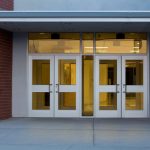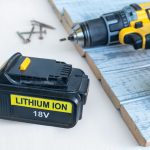
A global alliance of green building organizations has launched a sustainable finance call to action to bring the vast majority of buildings up to modern sustainability standards. The report “Building Transition: How to Scale and Finance an Inclusive Transition for the Built Environment” focuses on the 75 percent of lower-performing buildings that have not yet adopted green building practices.
According to a news release, the initiative, led by the UK’s Building Research Establishment (BRE), the Green Building Council of Australia (GBCA), the Singapore Green Building Council (SGBC), the U.S. Green Building Council (USGBC), and Alliance HQE-GBC France, seeks to close the gap between top performers and the rest of the market.
“With the building sector accounting for a significant share of global emissions, unlocking investments for the underperforming majority is seen as a crucial step in decarbonizing at scale. This call to action lays out how to attract capital to this [largely] untapped segment, ensuring that decarbonization happens across the entire built environment – not just in the elite tier of buildings,” the press release states.
Officials state the report identifies a critical gap in the industry–while high-performing buildings have access to green finance and resources, most buildings remain locked out due to a lack of capital. The report offers key recommendations to address this challenge:
- Policy and taxonomy reform: Stronger policies and taxonomies that direct capital toward underperforming buildings and context-specific, performance-oriented criteria tailored to diverse building types, ensuring investment reaches all buildings.
- Global decarbonization standards: Defining a credible decarbonization transition and providing common standards, metrics, and decarbonization tools that can be used globally while allowing for harmonization across diverse assets and geographies.
- Resilience in finance: Incorporating adaptation and resilience in real estate finance to account for the impacts of both acute and chronic climate events. Currently, this is not a common practice in real estate finance, and lack of resilience makes lower-performing buildings, the “other 75 percent,” more vulnerable to becoming stranded assets and suffering from climate impacts.
The coalition of organizations says the new call to action builds on the earlier report, “Financing Transformation: A Guide to Green Building for Green Bonds and Green Loans,” which outlined how green building certifications—such as LEED, BREEAM, Green Star, Green Mark, and HQE—can set the benchmark for sustainable investments. This new report expands the conversation to ensure inclusive financing solutions, enabling more building owners to access the funds needed to make meaningful improvements.
“[The report] represents a critical step in making sustainable finance accessible to a wider range of building owners, ensuring that decarbonization can happen at scale and in every corner of the built environment,” the press release states.
“Achieving large-scale decarbonization is only possible with widespread adoption of green building practices,” says Peter Templeton, president and CEO of USGBC. “Every building needs a decarbonization plan to help meet emissions reduction goals to mitigate climate change. However, making improvements to the vast stock of existing buildings requires access to capital. ‘Building Transition’ underscores the importance of uniting key stakeholders such as investors and policymakers to create more opportunities for building owners to act,” says Peter Templeton, president & CEO of the U.S. Green Building Council.






